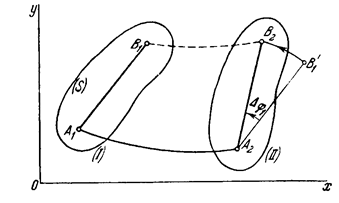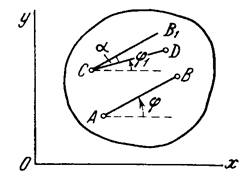
Заглавная страница Избранные статьи Случайная статья Познавательные статьи Новые добавления Обратная связь КАТЕГОРИИ: ТОП 10 на сайте Приготовление дезинфицирующих растворов различной концентрацииТехника нижней прямой подачи мяча. Франко-прусская война (причины и последствия) Организация работы процедурного кабинета Смысловое и механическое запоминание, их место и роль в усвоении знаний Коммуникативные барьеры и пути их преодоления Обработка изделий медицинского назначения многократного применения Образцы текста публицистического стиля Четыре типа изменения баланса Задачи с ответами для Всероссийской олимпиады по праву 
Мы поможем в написании ваших работ! ЗНАЕТЕ ЛИ ВЫ?
Влияние общества на человека
Приготовление дезинфицирующих растворов различной концентрации Практические работы по географии для 6 класса Организация работы процедурного кабинета Изменения в неживой природе осенью Уборка процедурного кабинета Сольфеджио. Все правила по сольфеджио Балочные системы. Определение реакций опор и моментов защемления |
Learn the following words and word combinations by heart:
Plane motion of a rigid body is such motion in which all the points of a body move parallel to a fixed plane P (Fig. 14). Many machine parts have plane motion, for example, a wheel running on a straight track or the connecting rod of a reciprocating engine. Rotation is, in fact, a special case of plane motion. Let us consider the section S of a body produced by passing any plane Oxy parallel to a fixed plane P (see Fig. 14). All the points of the body belonging to line MM' normal to plane P move in the same way.
Fig. 14 Fig. 15 Therefore, in investigating plane motion it is sufficient to investigate the motion of section S of that body in the plane Oxy. Here we shall always take the plane Oxy parallel to the page and represent a body by its section S. The position of section S in plane Oxy is completely specified by the position of any line AB in this section (Fig. 15). The position of the line AB may be specified by the coordinates xA and yA of point A and the angle φ between an arbitrary line AB in section S and axis x. The point A chosen to define the position of section S is called the pole. As the body moves, the quantities xA, yA, and φ will change and the motion of the body, i.e., its position in space at any moment of time, will be completely specified if we know xA = f1 (t), yA = f2 (t), f = f3 (t). (48) Eqs. (48) are the equations of plane motion of a rigid body. Let us show that plane motion is a combination of translation and rotation. Consider the successive positions I and II of the section S of a moving body at instants t1, and t2 = t1 +∆t (Fig. 16). It will be observed that the following method can be employed to move section S, and with it the whole body, from position I to position II.
Fig. 16
Let us first translate the body so that pole A occupies position The translational component of plane motion can, evidently, be described by the first two of Eqs. (48), and the rotational component by the third.
The principal kinematics characteristics of this type of motion are the velocity and acceleration of translation, each equal to the velocity and acceleration of the pole ( In analyzing plane motion, we are free to choose any point of the body as the pole. Let us consider a point C as a pole instead of A and determine the position of the line CD making an angle φ1 with axis x (Fig. 17). The characteristics of the translatory component of the motion would have been different, for in the general case This result can also be obtained from an examination of Fig. 16: whatever point is taken as the pole, to carry section S from position I to position II line A1B1 must be made parallel to A2B2, i.e., the section must be rotated around any pole through the same angle ∆φ1, equal to the angle between the two lines. Hence, the rotational component of motion does not depend on the position of the pole.
Fig. 17 Comprehension check.
|
|||||||||||||||||||||||||||
|
Последнее изменение этой страницы: 2021-02-07; просмотров: 69; Нарушение авторского права страницы; Мы поможем в написании вашей работы! infopedia.su Все материалы представленные на сайте исключительно с целью ознакомления читателями и не преследуют коммерческих целей или нарушение авторских прав. Обратная связь - 3.128.168.87 (0.005 с.) |


 (line A1B1, occupies position A2B1') and than turn the section about pole A2, through angle ∆φ1. In the same way we can move the body from position II to some new position III, etc. We conclude that the plane motion of a rigid body is a combination of a translation, in which all the points move in the same way as the pole A, and of a rotation about that pole.
(line A1B1, occupies position A2B1') and than turn the section about pole A2, through angle ∆φ1. In the same way we can move the body from position II to some new position III, etc. We conclude that the plane motion of a rigid body is a combination of a translation, in which all the points move in the same way as the pole A, and of a rotation about that pole. ) and the angular velocity and angular acceleration of the rotation about the pole. The values of these characteristics can be found for any time t from Eqs. (48).
) and the angular velocity and angular acceleration of the rotation about the pole. The values of these characteristics can be found for any time t from Eqs. (48). and
and  (otherwise the motion would be that of pure translation). The characteristics of the rotational component of the motion remain, however, the same. For, drawing CB, parallel to AB, we find that at any instant of time angle φ1 = φ –a, where a = const. Hence,
(otherwise the motion would be that of pure translation). The characteristics of the rotational component of the motion remain, however, the same. For, drawing CB, parallel to AB, we find that at any instant of time angle φ1 = φ –a, where a = const. Hence, ,
,  ,
,



